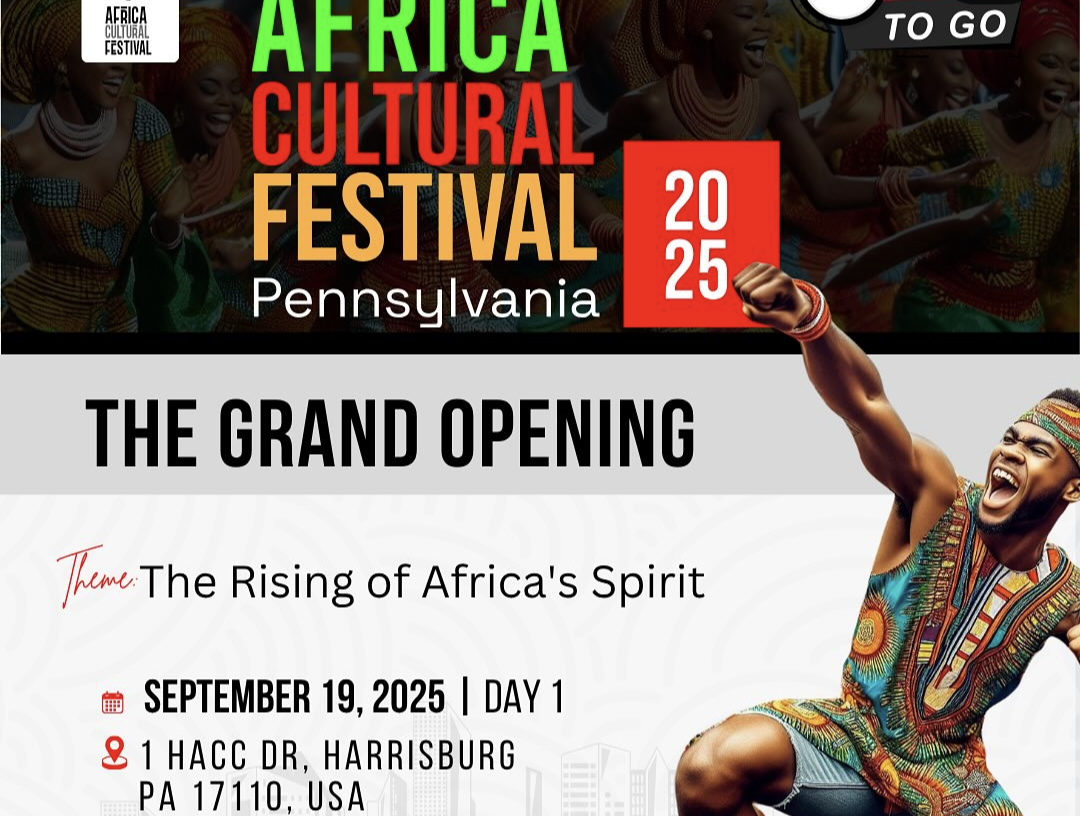15 Best Electronic Music Songs of All Time
Electronic music has transformed the global soundscape, evolving from underground raves to mainstage festival anthems and chart-topping hits. With its limitless creativity, boundary-pushing production, and infectious energy, electronic music has become one of the most influential forces in modern music. From the thumping beats of house and techno to the cinematic heights of trance and the seismic drops of dubstep and EDM, these songs have shaped generations of dancefloors, headphones, and hearts alike.
In this electrifying countdown, we’re diving into the Top 15 Most Popular Best Electronic Music Songs of All Time—a curated list of iconic tracks that not only defined their genres but also left a permanent mark on pop culture. These aren’t just club bangers; they’re anthems that sparked movements, launched careers, and brought pure, unfiltered euphoria to millions around the world. Whether you’re a longtime raver, a festival fanatic, or just discovering the magic of electronic music, this list will take you on a pulse-pounding journey through the genre’s greatest hits.
So plug in, turn up the volume, and get ready to relive the beats that made the world move. These are the songs that changed everything—one drop at a time.
Released at the dawn of the new millennium, “One More Time” is arguably the most exuberant and universally adored anthem in Daft Punk’s trailblazing career. Featuring looped and soulful vocals from Romanthony, the track marries French house grooves with euphoric synths and the duo’s signature vocoder magic. There’s a warmth and joy to the repetition—”one more time” becomes less of a lyric and more of a mantra, a cry to keep the celebration alive. It’s electronic music that’s alive with feeling, expertly engineered yet deeply human. When it dropped in 2000, it didn’t just dominate clubs—it redefined the potential of dance music on the global stage, fusing underground cool with mainstream accessibility. The song became a cultural landmark, marking a turning point for electronic music’s place in pop culture. More than two decades later, “One More Time” still hits with the same rush of joy and unity, lighting up dancefloors, festivals, and nostalgic hearts everywhere. It’s not just a track—it’s a timeless celebration of life, music, and the unifying power of rhythm.
When Darude released “Sandstorm” in 1999, he probably had no idea he was creating one of the most iconic electronic tracks of all time. Built around a rapid-fire trance beat and a laser-sharp synth lead, the instrumental track quickly became a global club staple. Its energy is relentless, its structure hypnotic, and its sound—pure adrenaline. “Sandstorm” didn’t rely on vocals or gimmicks; instead, it unleashed a pulse-pounding rhythm that felt like a sprint from start to finish. The song exploded not only in clubs and raves but also at sporting events and, eventually, across the internet as a legendary meme. For many, it was their first introduction to trance music, and for others, it’s a nostalgic reminder of the early 2000s rave culture. Over 20 years later, the track’s high-octane momentum hasn’t aged a bit. Whether you’re hearing it for the first time or the hundredth, “Sandstorm” still has the power to send a jolt through your system. It’s fast, futuristic, and unforgettable—a cultural touchstone of electronic music’s early mainstream surge.
Avicii’s “Levels,” released in 2011, was more than just a hit—it was a cultural moment that helped define the sound of a generation. Built around a radiant synth hook and an expertly flipped sample of Etta James’s “Something’s Got a Hold on Me,” the track elevated progressive house to new heights. With its slow-building euphoria and explosive drops, “Levels” struck a perfect balance between dancefloor energy and emotional resonance. It wasn’t just another club anthem; it was a declaration that electronic music could be beautiful, uplifting, and universally appealing. For many, it served as their introduction to EDM, opening the floodgates for countless imitators and future producers. Behind it all was Tim Bergling, the young Swedish producer known as Avicii, whose vision and talent shaped a new era of dance music. Tragically gone too soon, Avicii left a lasting legacy, and “Levels” remains his most iconic work. More than a decade later, its impact still reverberates—on festival stages, in the hearts of fans, and through the countless artists it inspired. It’s a modern classic that never loses its shine.
Deadmau5’s “Strobe,” released in 2009, is often hailed as his most profound and emotionally resonant track. Spanning over 10 minutes, it’s not your typical club banger—it’s a journey. The song opens with soft, ambient melodies that slowly evolve, layer by layer, into a lush, pulsating crescendo of progressive house brilliance. There’s patience in its build, a cinematic quality that invites introspection before finally erupting into something euphoric. Unlike tracks that chase the drop, “Strobe” embraces the slow burn, making the eventual release all the more rewarding. It’s a masterclass in restraint, atmosphere, and musical storytelling. Joel Zimmerman, better known as Deadmau5, used “Strobe” to showcase his unparalleled skill in blending minimalism with emotional depth. For fans and critics alike, it stands as a magnum opus—proof that electronic music can be as moving and meaningful as any symphony or ballad. More than just a song, “Strobe” is an experience, one that lingers long after the final note fades. Even today, it’s regarded as one of the most beautifully crafted tracks in the genre, solidifying Deadmau5’s status as an artist, not just a producer.
When “Animals” dropped in 2013, it didn’t just make waves—it caused a tidal shift in electronic dance music. Created by a then-17-year-old Martin Garrix, the track’s explosive success was unprecedented. With its thunderous drops, minimalist build-up, and pounding rhythm, “Animals” became an instant festival favorite and an anthem for the big room house era. It was aggressive, catchy, and completely unexpected from such a young artist. The song’s success proved that EDM had officially entered the era of the young prodigy, opening doors for a new generation of bedroom producers to dream big. But it wasn’t just the story of Garrix’s age that made “Animals” a phenomenon—it was the track’s raw energy and hypnotic pull. From Tomorrowland to Coachella, it lit up stages worldwide and became a blueprint for festival-ready bangers. Over a decade later, it’s still a go-to for high-energy DJ sets, a reminder of when EDM exploded into the mainstream with a roar. “Animals” didn’t just launch Garrix’s career—it redefined what was possible for youth in electronic music.
David Guetta’s “Titanium,” featuring powerhouse vocalist Sia, hit airwaves in 2011 like an emotional tidal wave. On the surface, it’s a soaring EDM anthem powered by Guetta’s stadium-sized production—but listen closer, and you’ll find a story of resilience, strength, and self-belief. Sia’s vocal performance is the heart of the track, delivering lyrics like “I’m bulletproof, nothing to lose” with both fragility and defiance. It’s that emotional duality—vulnerability wrapped in power—that gave “Titanium” its staying power. Guetta’s slick beats and massive synth drops provide the perfect contrast to Sia’s raw emotion, creating a song that’s equally at home on the dancefloor and in headphones during life’s toughest moments. The track marked a turning point for both artists: it elevated Guetta’s status as a crossover hitmaker and introduced Sia to a global audience, long before her solo stardom. Over time, “Titanium” became more than just a hit single—it turned into an anthem for anyone who’s ever had to stand strong in the face of adversity. A decade later, its message still resonates loud and clear.
With just one phrase repeated 144 times, Daft Punk’s “Around the World,” released in 1997, proved that musical genius doesn’t need complexity—it just needs groove. Anchored by a funky bassline, robotic vocals, and disco-tinged synths, the track created a hypnotic loop that somehow never gets old. Its repetition becomes trance-inducing, like a dance ritual that pulls listeners in with every cycle. This was Daft Punk at their most experimental and confident, crafting a soundscape that was futuristic yet firmly rooted in house and funk traditions. The track became a landmark for the French house movement, catapulting the masked duo into global stardom. And then there’s the iconic music video, directed by Michel Gondry—each dancer representing a different part of the song’s structure, turning music into choreography. It wasn’t just a song, it was an artistic concept executed to perfection. Nearly three decades on, “Around the World” still feels cutting-edge. It’s not just a testament to the power of rhythm—it’s a masterclass in how to say everything by saying very little.
“Blue (Da Ba Dee)” by Eiffel 65, released in 1998, is the kind of song that leaves an impression—whether you love it or not. With its surreal lyrics, shimmering synths, and unforgettable vocoder-driven chorus, it quickly became one of the most distinctive pop-electronic tracks of the late ‘90s. The Italian trio behind the hit crafted a sonic world that was part Eurodance, part sci-fi fantasy. “I’m blue da ba dee da ba daa” may sound like nonsense, but its weird charm helped the track become a global chart-topper and a pop culture phenomenon. It wasn’t just a novelty—beneath the surface was a finely tuned production that fused catchy melodies with futuristic flair. At a time when electronic music was still climbing into the mainstream, Eiffel 65 broke through by embracing the strange and the bold. Over 25 years later, “Blue” is still instantly recognizable, whether at a retro dance party or in a meme. It’s one of those rare songs that’s so odd, it circles back to brilliance—a reminder that sometimes, the weirdest ideas are the ones that stick forever.
Eric Prydz’s “Opus” is less a song and more an odyssey—a slow-burning epic that turns tempo into emotion. Released in 2016, the nearly 10-minute track begins with a metronome-like pulse that gradually speeds up, creating a sense of tension that’s as psychological as it is rhythmic. Prydz resists the urge to rush; instead, he builds with surgical care, layering synth textures that swell and shimmer until the whole composition bursts into a euphoric climax. It’s a masterclass in restraint, rewarding patient listeners with a payoff that feels earned rather than forced. “Opus” breaks from traditional club formulas, blurring the line between dance track and symphonic masterpiece. It’s cinematic, spacious, and emotionally charged—more akin to a journey through time and space than a standard EDM tune. By pushing structure to the extreme, Prydz showcased how dance music can be both intellectually stimulating and viscerally satisfying. “Opus” isn’t just a track—it’s a statement of purpose and a towering example of what electronic music can achieve when it dares to breathe, evolve, and transcend the dancefloor. Even years later, it stands as one of the most ambitious and awe-inspiring works in modern electronic music.
When Skrillex dropped “Scary Monsters and Nice Sprites” in 2010, he didn’t just release a track—he shattered expectations and rewrote the rules of electronic music. The song was a blitzkrieg of chopped vocals, snarling bass, and glitchy chaos, built on aggressive drops that hit like a sonic punch to the gut. It was jarring, it was loud, and it was unlike anything else dominating club scenes at the time. Anchored by the now-iconic “Yes, oh my God!” sample, the track quickly became a lightning rod for the exploding dubstep movement, catapulting Skrillex from former post-hardcore frontman to EDM’s rebellious poster child. “Scary Monsters and Nice Sprites” introduced bass music to a new generation, dividing purists and thrilling newcomers with its daring sound design. Love it or loathe it, the track was a defining moment—one that blew open the doors for experimental, high-octane production. Skrillex didn’t just make a hit; he created a cultural shift. Over a decade later, its influence is still felt in bass drops across genres and continents. The track remains a high-voltage reminder of how far sonic boundaries can be pushed when an artist embraces the wild side.
Released in 1995, Faithless’s “Insomnia” is the rare dance track that goes deeper than the beat. It’s a haunting anthem for the restless—those whose minds won’t shut off and whose nights stretch into introspective marathons. The song opens with a slow, simmering build, punctuated by Maxi Jazz’s now-legendary spoken line: “I can’t get no sleep.” That phrase became a cultural mantra, capturing both physical sleeplessness and a deeper existential unease. As the track unfolds, it layers shimmering synths and pulsing rhythms into a massive trance crescendo, but never loses its sense of tension or melancholy. “Insomnia” isn’t just about dancing—it’s about thinking, feeling, yearning. Faithless managed to balance club energy with cerebral substance, turning a night out into something almost spiritual. The track helped define a more thoughtful side of electronic music—one rooted not just in movement, but in message. Even decades later, “Insomnia” remains one of the most iconic and emotionally complex tracks in the genre’s history. It’s a song for the midnight hour, for those who lie awake and find solace not in silence, but in sound.
Nicky Romero’s “Toulouse,” released in 2011, was a bombshell in the world of big room house—an aggressive, no-frills anthem that hit like a battering ram. Built around a monstrous drop, distorted horn blasts, and a pounding kick drum, the track quickly became a go-to weapon for festival DJs looking to shake the ground. What set “Toulouse” apart was its grit. At a time when many EDM tracks leaned toward polished, melodic builds, Romero leaned into raw, industrial textures and tension-building silences. The result was a song that felt urgent, edgy, and undeniably massive. “Toulouse” wasn’t just a club track—it was a defining moment for a new wave of high-energy dance music designed for massive crowds and even bigger soundsystems. The song catapulted Romero into the international spotlight, cementing his role as a leader in the booming festival scene. More than a decade later, “Toulouse” still goes off, a reminder of a time when drop-driven tracks ruled dance music and every DJ set aimed to deliver an adrenaline shot straight to the crowd’s heart.
M83’s “Midnight City,” released in 2011, is a shimmering dreamscape of a song—equal parts electronic anthem and indie rock reverie. It opens with a bright, otherworldly synth riff that’s instantly recognizable, setting the tone for a track that feels like a late-night drive through a neon-lit metropolis. There’s a cinematic quality to everything: the echo-laced vocals, the atmospheric layering, and especially the now-iconic saxophone solo that soars over the final moments like a triumphant exhale. Anthony Gonzalez, the mastermind behind M83, built “Midnight City” not just as a song but as a mood—nostalgic, mysterious, and endlessly evocative. It became a rare crossover hit, adored by electronic purists and indie fans alike, and found its way into commercials, film trailers, and playlists everywhere. But despite its mainstream reach, it never lost its sense of wonder. “Midnight City” captures that fleeting feeling of being young, lost, and electrified by the world. It’s a soundtrack for memories both real and imagined—timeless, transformative, and utterly intoxicating.
Tiësto’s 2005 remix of “Adagio for Strings” is a breathtaking fusion of classical emotion and trance intensity. Taking Samuel Barber’s mournful and majestic original composition, Tiësto transformed it into a festival anthem without losing an ounce of its emotional weight. The remix begins with a reverent nod to the original, its sweeping strings building suspense, before exploding into a surge of synths, beats, and trance euphoria. It was bold, even controversial—blending sacred orchestral music with dancefloor energy—but it worked brilliantly. The track became a staple in Tiësto’s live sets, often used as a peak-time moment that left crowds stunned and exhilarated. What made it special wasn’t just the blending of genres, but the way it respected both: the remix amplified the emotion of Barber’s original while introducing it to a new generation through the lens of trance. “Adagio for Strings” showed that electronic music could evoke the same grandeur and pathos as a classical symphony. It’s more than a remix—it’s a milestone in genre-bending creativity that still gives chills to this day.
“Firestarter,” released by The Prodigy in 1996, was a musical detonation—a snarling, ferocious blend of rave, punk, and industrial energy that scorched everything in its path. Led by Keith Flint’s menacing vocals and unpredictable presence, the track was a manifesto for chaos, rebellion, and sonic destruction. With distorted synths, crashing beats, and a swaggering rhythm, “Firestarter” didn’t just break rules—it blew them up. It was aggressive and unapologetic, merging underground rave sounds with rock attitude in a way no one had heard before. The track hit No. 1 in the UK and sparked debates, bans, and fascination in equal measure. It announced The Prodigy as not just electronic artists, but full-on cultural provocateurs. “Firestarter” was more than just a song—it was an attitude, a declaration of war on the bland and predictable. Even decades later, it feels dangerous, thrilling, and alive. Keith Flint may be gone, but the fire he started still burns through speakers whenever this track plays. It’s a reminder that electronic music doesn’t always have to be clean and polished—sometimes, it’s at its best when it bites.
Samuel Moore is a frequent contributor to Singers Room. Since 2005, Singersroom has been the voice of R&B around the world. Connect with us via social media below.













